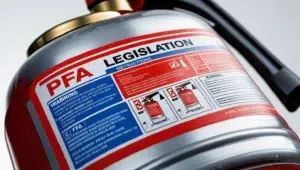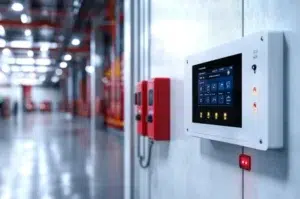
PFA Legislation – Foam fire extinguishers
Only foam extinguishers containing PFOA are banned. Many foam extinguishers manufactured post2016 are already PFOA-free, or contain alternative PFAS like C6, which are still legal.
Book your FREE, no-strings-attached Fire Safety Audit to ensure that you’re properly protected from the risk and comply with current fire safety legislation.
Get essential insights and updates
in fire safety – straight to your inbox!

Fire Drills are commonly seen as that frustrating regularity (…or in some case irregularity) that interrupts everyone’s busy schedule for little benefit.
However, they are a critical part of rehearsing your safe evacuation procedures, and can often uncover gaps in your evacuation planning which could make all the difference in a real fire – for example:
Of course. Hopefully everyone did their duty and someone timed the evacuation and was able to carry out a roll call. If not all these things happened, then some of the key questions might need answering… and with the correct procedures put in place, it would then be wise to conduct another fire drill to ensure that your new procedures work as intended.
That will depend on the size of the organisation. Six monthly rolls off the tongue but if there are only half a dozen people then probably twelve monthly is ample. Schools will often do one per term.
Three minutes.
More important is for the evacuation team to be drilled in procedure so that roles are discussed and clarified.
Consider blocking off a route with a mock fire situation, observe how people respond to a challenge to the status quo and use their initiative.
Request you fire alarm company to train a team of people in the operation of a panel, testing via a call point, taking the system off watch to carry out a test, reading a zonal plan.
This is important to understand what the evacuation policy is, whether it be horizontal evacuation or vertical evacuation, either could include the need for evacuation mats or similar. Again, procedure is key.
At Blazequel, we provide comprehensive fire training services tailored for businesses of all sizes, including schools, hospitals, factories, and various workplaces. Whether you need fire drill sessions or have inquiries, feel free to contact us for assistance. We’re here to support your fire safety needs.

Only foam extinguishers containing PFOA are banned. Many foam extinguishers manufactured post2016 are already PFOA-free, or contain alternative PFAS like C6, which are still legal.

Fire alarm monitoring in the UK is facing major changes due to the phase-out of traditional communication networks and providers. Analogue phone lines (PSTN) are being switched off by December

In industrial environments, safety is more than a priority—it’s a responsibility. Yet, one of the most dangerous threats to worker health is often invisible, odorless, and too often overlooked: carbon
Video Smoke Detection is perfect for a fast response to fires in high roofed buildings and harsh operating conditions.
Watch Smokecatcher detect smoke in an MSW storage building. The smoke is coming through from a fire in the adjoining storage area.
Watch Smokecatcher detect a fire in an SRF Storage bunker. Sadly, the alarm wasn’t responded to and the site lost a 4hr window of opportunity between smoke detection and flames appearing.
Video Smoke Detection overcomes the risks of stratification and other challenges for early fire detection in logistics and storage facilities.
Watch Fire Rover detect and suppress a fire in the waste bunker at an EFW facility!
See how the Fire Rover detects and suppresses this fire at a clients tipping hall. Note how the smok is spreading out at low leve, rather than rising. This is called ‘stratification’ and is one of the many reasons why roof-mounted smoke detection systems like beam detectors and HSSD is not suitable for many recycling applications.
Watch the Fire Rover detect and suppress a fire at a battery storage facility. This targeted and intellegent control makes the Fire Rover particularly well suited to high hazard storage applications.
Watch the Fire Rover tackle a battery fire in a tipping hall. Note how the exploding battery cells start three separate fires, which the operator individually suppresses (whilst avoiding the site operators in the vicinity).
Get essential insights and updates in fire safety – straight to your inbox!